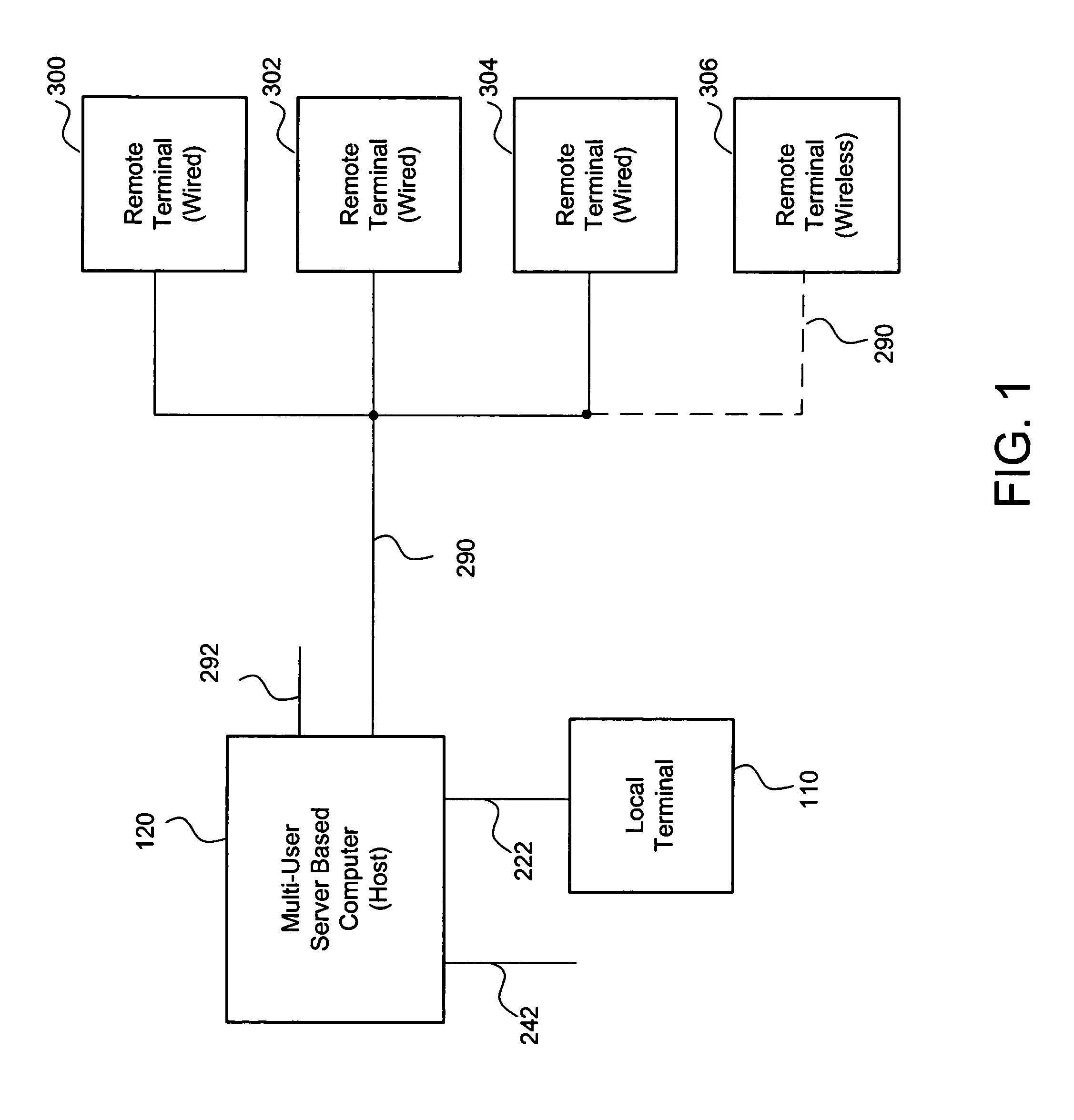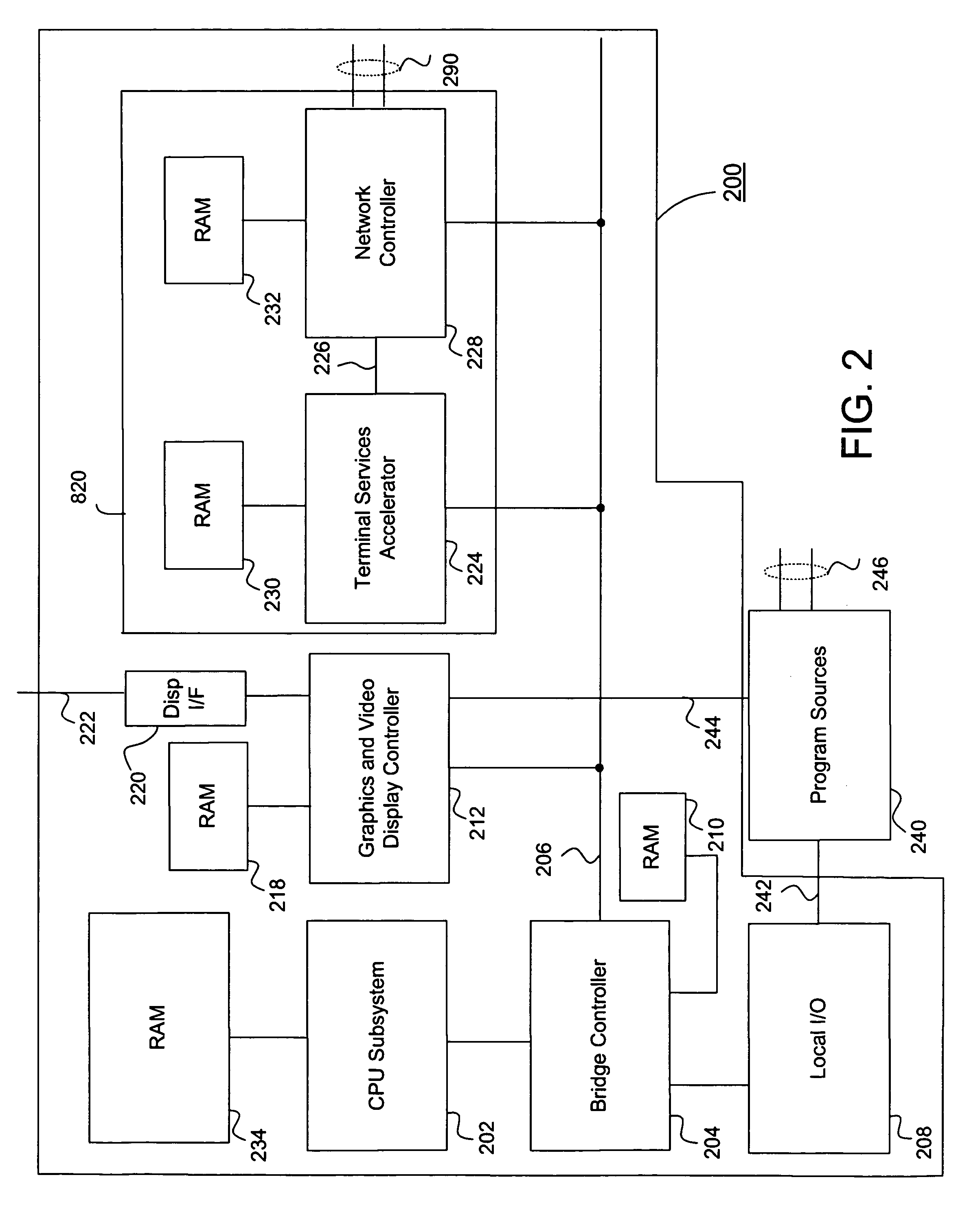Multi-user terminal services accelerator
a terminal and accelerator technology, applied in the field of multi-user host computer system, can solve the problems of reducing the ability to support the workload of additional users, limiting a single user to a single computer, and reducing the economic sense of single user limitation, so as to facilitate system interoperability and functionality, and achieve low latency , the effect of optimizing the frame ra
- Summary
- Abstract
- Description
- Claims
- Application Information
AI Technical Summary
Benefits of technology
Problems solved by technology
Method used
Image
Examples
Embodiment Construction
[0033]The present invention relates to an improvement in multi-user Remote Terminal (RT) computer systems. While the described embodiments relate to multi-user RT computer systems, the same principles and features could be equally applied to other types single user systems and other types of thin clients.
[0034]Referring to FIG. 1, the invention provides an efficient architecture for a multi-user computer system 100. A Multi-User server based computer 120, referred to as the “Host 120,” processes applications for multiple users each utilizing some form of a Remote Terminal. A local terminal 110 is included primarily for a single user or for administrative tasks, and the Host 120 produces display update network streams over wired network(s) 290 to each of RTs 300, 302, 304, etc., or over a wireless network 290 to display(s) 306. Users at the RTs are able to time-share the host computer 120 as if it were their own local computer and have complete support for all types of graphics, text...
PUM
 Login to View More
Login to View More Abstract
Description
Claims
Application Information
 Login to View More
Login to View More - R&D
- Intellectual Property
- Life Sciences
- Materials
- Tech Scout
- Unparalleled Data Quality
- Higher Quality Content
- 60% Fewer Hallucinations
Browse by: Latest US Patents, China's latest patents, Technical Efficacy Thesaurus, Application Domain, Technology Topic, Popular Technical Reports.
© 2025 PatSnap. All rights reserved.Legal|Privacy policy|Modern Slavery Act Transparency Statement|Sitemap|About US| Contact US: help@patsnap.com



